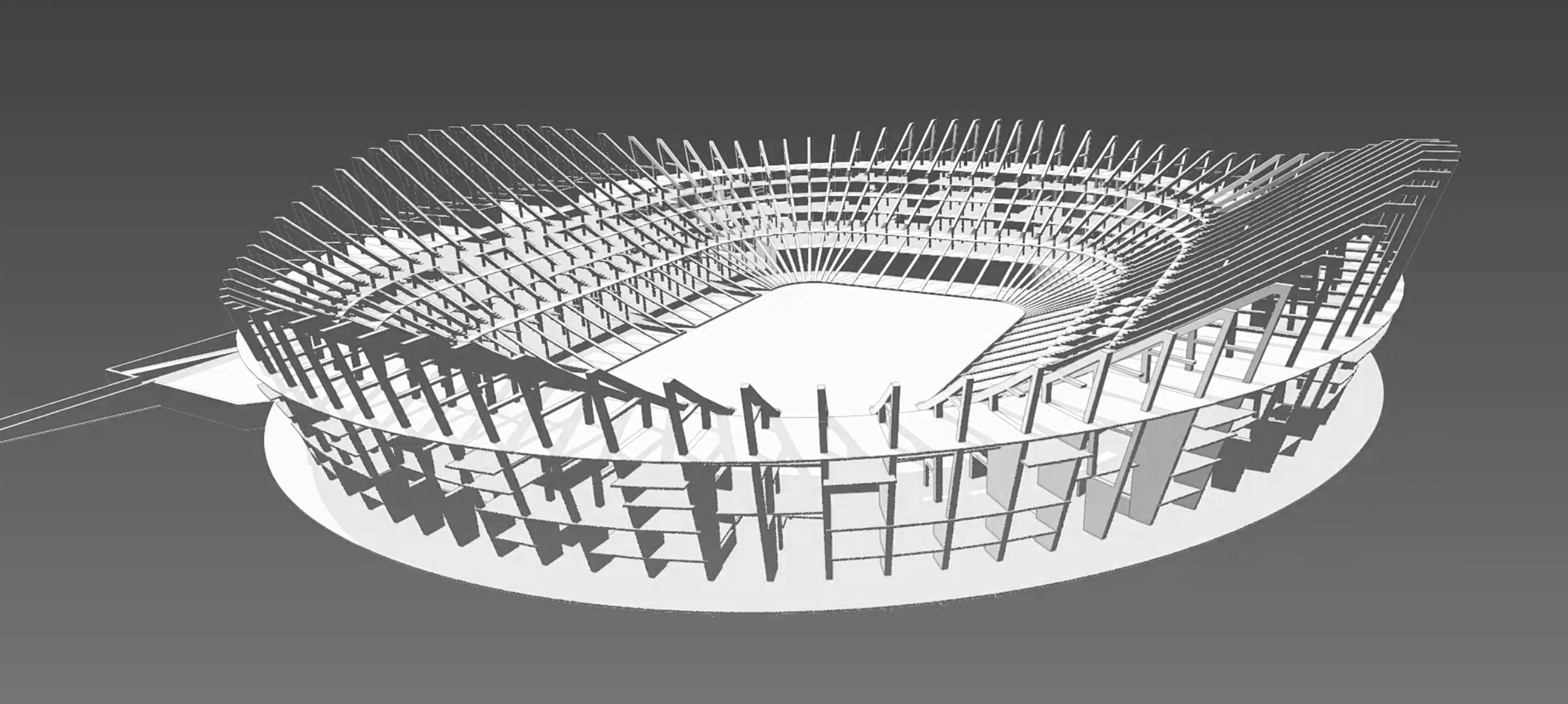
| Lusail Stadium | |
| Doha, Qatar | |
| Structural typology | Stadiums |
| Date | September, 2016 |
| Scope | Structural support in the tender process |
| Architect | Fenwick Iribarren Architects |
| Construction | UTE Acciona Ingenieria- Redco Construction-Almana |
| Owner | Supreme Commitee for Delivery & Legacy |
The new Lusail Stadium is designed for 80.000 spectators and his shape is circular, with 280 meters of approximate diameter. The stadium has a basement level, a ground level and seven uppers floors which defined the concourse. Three levels of inclined terraces are proposed for the bowl.
Concrete is proposed to solve the concourse structure and bowl. In general, the concourse slab will be solved with precast concrete but in situ concrete will be used in areas with openings. The slab or hollow-core slab supports on beam of in situ concrete. The terraces slab always will be solved with precast concrete and these will support on in situ concrete raker beams.
The principal concrete structure of the stadium is solved by 88 radial portal frames and 28 cores. The columns support with footings on upper rock. The structure concrete is divided in six areas through eight joints in radial direction.
The distance between portal frames is variable, 8.90 m in general. The beams have a T shape with dimension of 1.05 x 1.00 meters. The hollow-core slabs rest on 15 centimeters surfaces from the beams.
The portal frame is designed to support the horizontal and vertical loads. The beams will be working in bending and the columns in compression. The footings will be between the rock and the columns.
Concrete is proposed to solve the concourse structure and bowl. In general, the concourse slab will be solved with precast concrete but in situ concrete will be used in areas with openings. The slab or hollow-core slab supports on beam of in situ concrete. The terraces slab always will be solved with precast concrete and these will support on in situ concrete raker beams.
The principal concrete structure of the stadium is solved by 88 radial portal frames and 28 cores. The columns support with footings on upper rock. The structure concrete is divided in six areas through eight joints in radial direction.
The distance between portal frames is variable, 8.90 m in general. The beams have a T shape with dimension of 1.05 x 1.00 meters. The hollow-core slabs rest on 15 centimeters surfaces from the beams.
The portal frame is designed to support the horizontal and vertical loads. The beams will be working in bending and the columns in compression. The footings will be between the rock and the columns.



